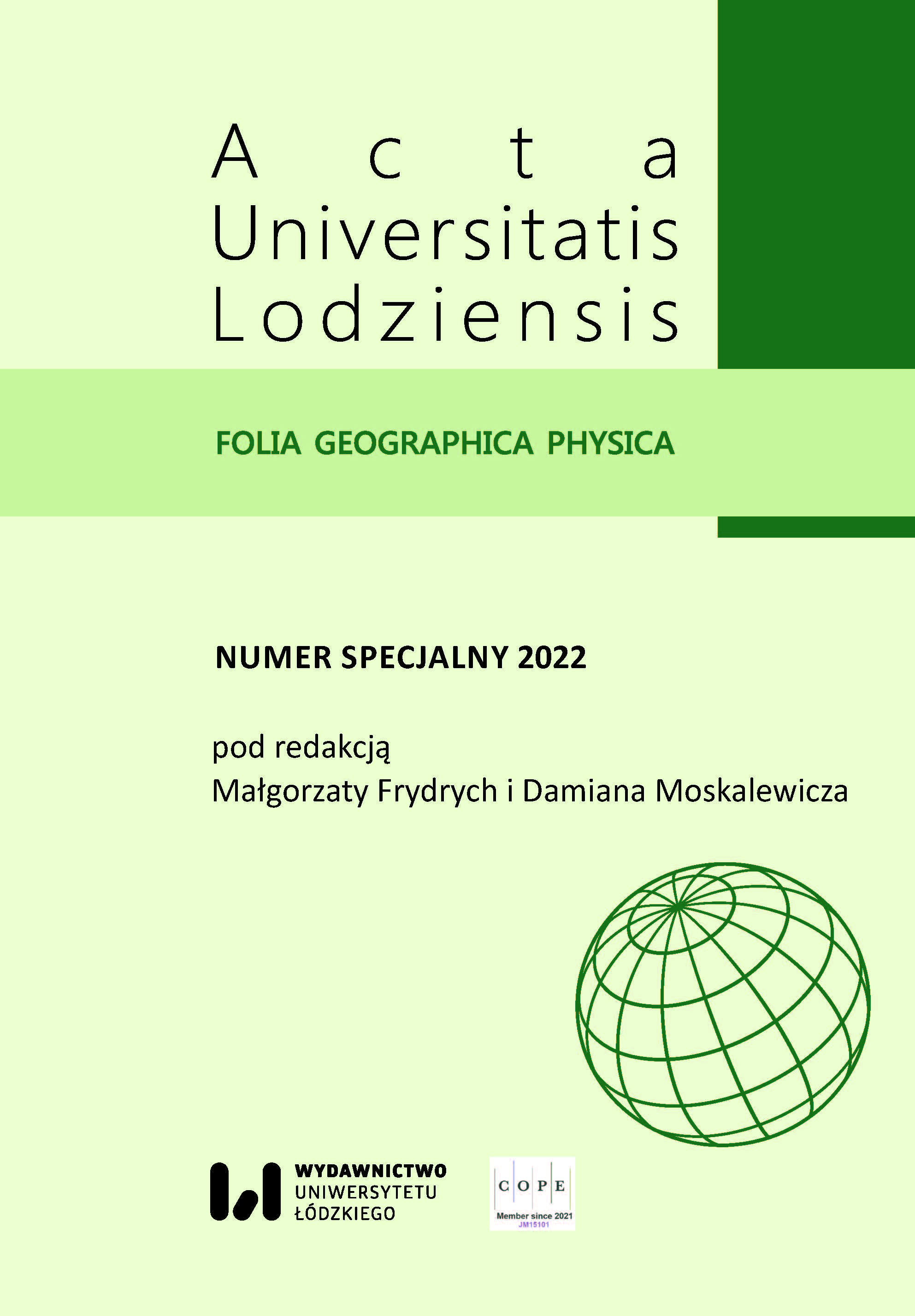
We kindly inform you that, as long as the subject affiliation of our 300.000+ articles is in progress, you might get unsufficient or no results on your third level or second level search. In this case, please broaden your search criteria.







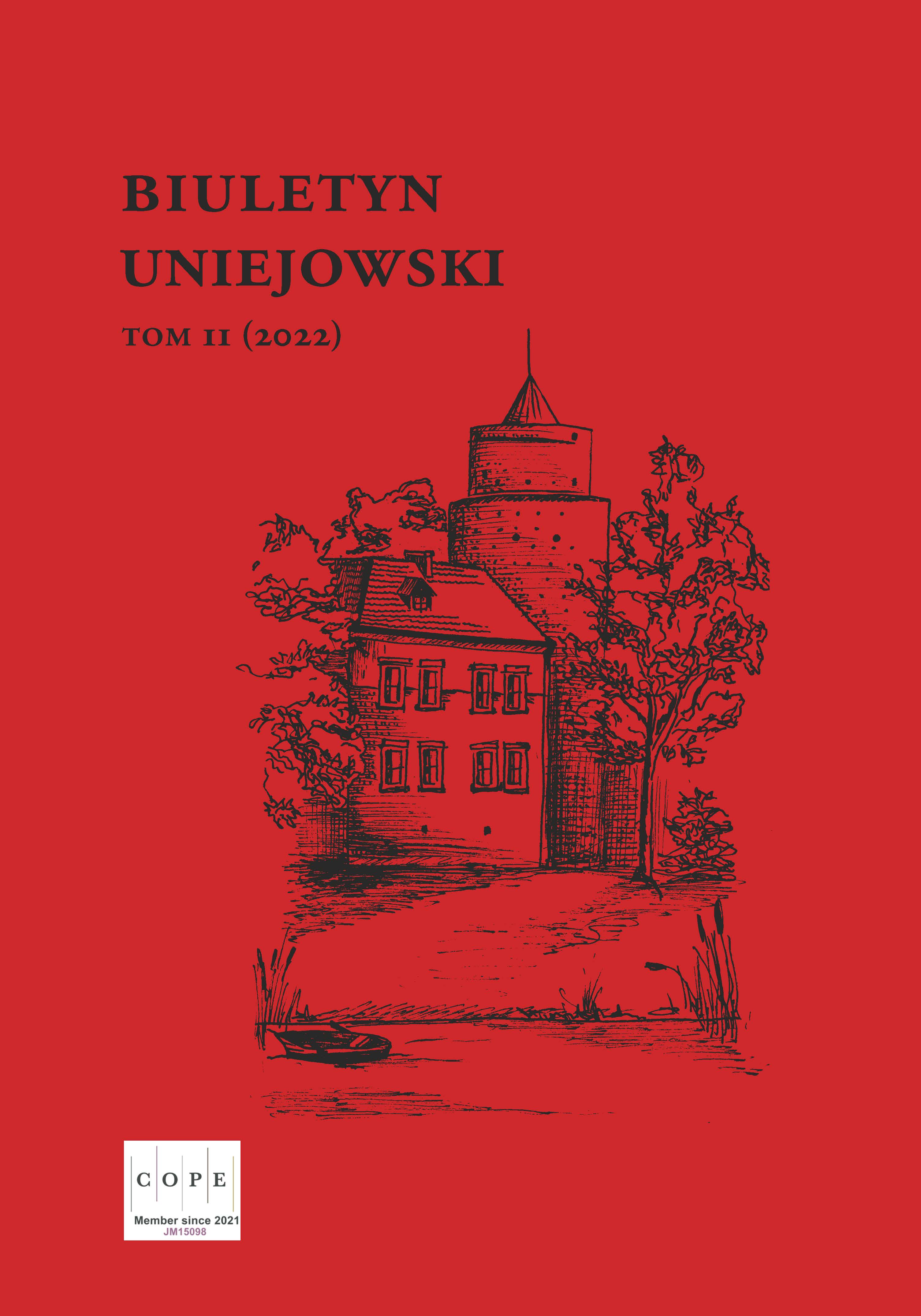
The aim of this article was to identify problem areas in the spatial development of Wilamów and to indicate desirable change directions. Special attention has been paid to the main determinants of the development of the area under study, including its geographical location, socio-economic characteristics and valid planning documents. The methods used include field research, the most important being the field inventory conducted on 9–12 August 2021. The study has identified four problem areas, with present weaknessess described and directions indicated for changes aimed at improvement of the quality of life of the inhabitants.
More...
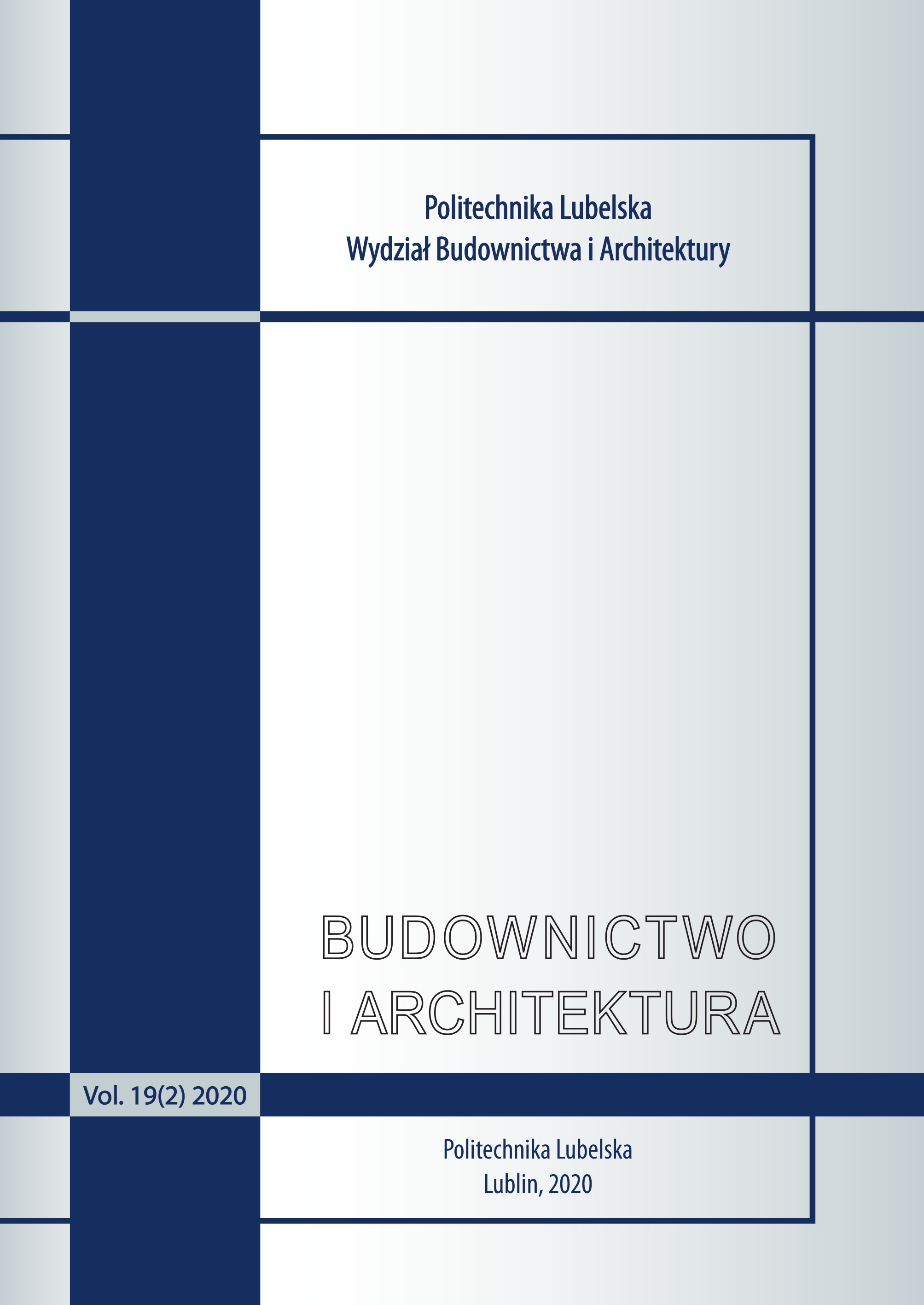
The dynamic development of built-up areas observed in the last few decades resulted in strong environmental transformations, especially in terms of climate phenomena. One of the factors which significantly affects the climate and bioclimate of urban areas is wind. Wind can cause discomfort to pedestrians or heat loss in buildings, if the wind speed around buildings is too high. The paper presents two examples of research conducted by the author, related to the issues of wind flow in built-up areas, based on the numerical simulations. The numerical simulations become an increasingly frequently used tool to determine the wind climate. Simulation results provide designers with important information on the influence of the buildings and their layout on the local changes in airflow. They allow testing of alternative solutions and effectiveness of various remedial measures.
More...
This paper intends to underline the importance of historic public spaces as the deposits of collective memories, proposing the critical analysis, reinterpretation, and systematization of relevant informative historical layers as a counter model to the globalizing tendencies and their fast pace of transformation. Baharestan is a historic square located in the northeast of Tehran’s Historic Center, and it is the home to Iran’s Parliament and the Ministry of Culture. It makes the square significant at the national level, especially due to its location surrounded by several exquiste historical heritage buildings. However, following the decline of Tehran’s historic center, Baharestan lost its socio-cultural vitality and spatial quality, hosting urban functions mainly heterogeneous to its identity, and eventually turning into a traffic node. Through the comparative study of numerous historical documents, and adapting the concept of “palimpsest”, Baharestan Square has been interpreted as the assemblage of different city layers in relation to the environmental and socio-political narratives of the city. The shift from one layer to another intends to reflect some of the lost memories of Tehran and its collective identity in the transition from traditional to modern society. Later on, the paper argues how this palimpsest quality and co-evolution of those plural layers and narratives in Baharestan demonstrate this symbolic square as a “catalytic social infrastructure”, giving Tehran an opportunity to overcome the challenge of “social amnesia” and promoting its civic culture and cohesion.
More...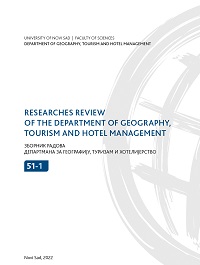
There is a constant need for improvement in inland water navigation based on the implementation of innovative technologies. This is necessary to ensure better traffic management, safer navigation, more economicallyprofitable navigation, and to make inland navigation more reliable. This paper provides a rare a general reviewof currently used employed technologies of river information systems (RIS), the ways how they are used in practice, and the current state of development in Serbia. Throughout recent history, RIS technologies have beenconstantly improving, and accordingly, new legal documents have been drafted and published. These providea formal-legal basis for each one of RIS technologies, and make their standardization easier. As the technology keeps progressing, the RIS concept should be able to adapt to it, and keep improving inland waterway transport, especially given that this mode of transport has much potential for the future
More...
Google Maps is one of the most influential applications in the world. Google Maps provides convenient andaccessible features such as Street View, Local Guide, and Google My Business, amongst others. This study analyses and compares the average population of 28 selected cities in the European Union in 2016 and 2022. Thepresence of Street View in cities was investigated further and the average number of photos was determinedin 2022. The average number of photographs in 2016 is between 97 and 139, while in 2022 it ranges between2,144 and 3,872. This preliminary research was conducted using the counting method to determine whether acertain average number of photos exists concerning the population. The research is significant because it provides insight into the importance and viability of using Google Maps for tourism research.
More...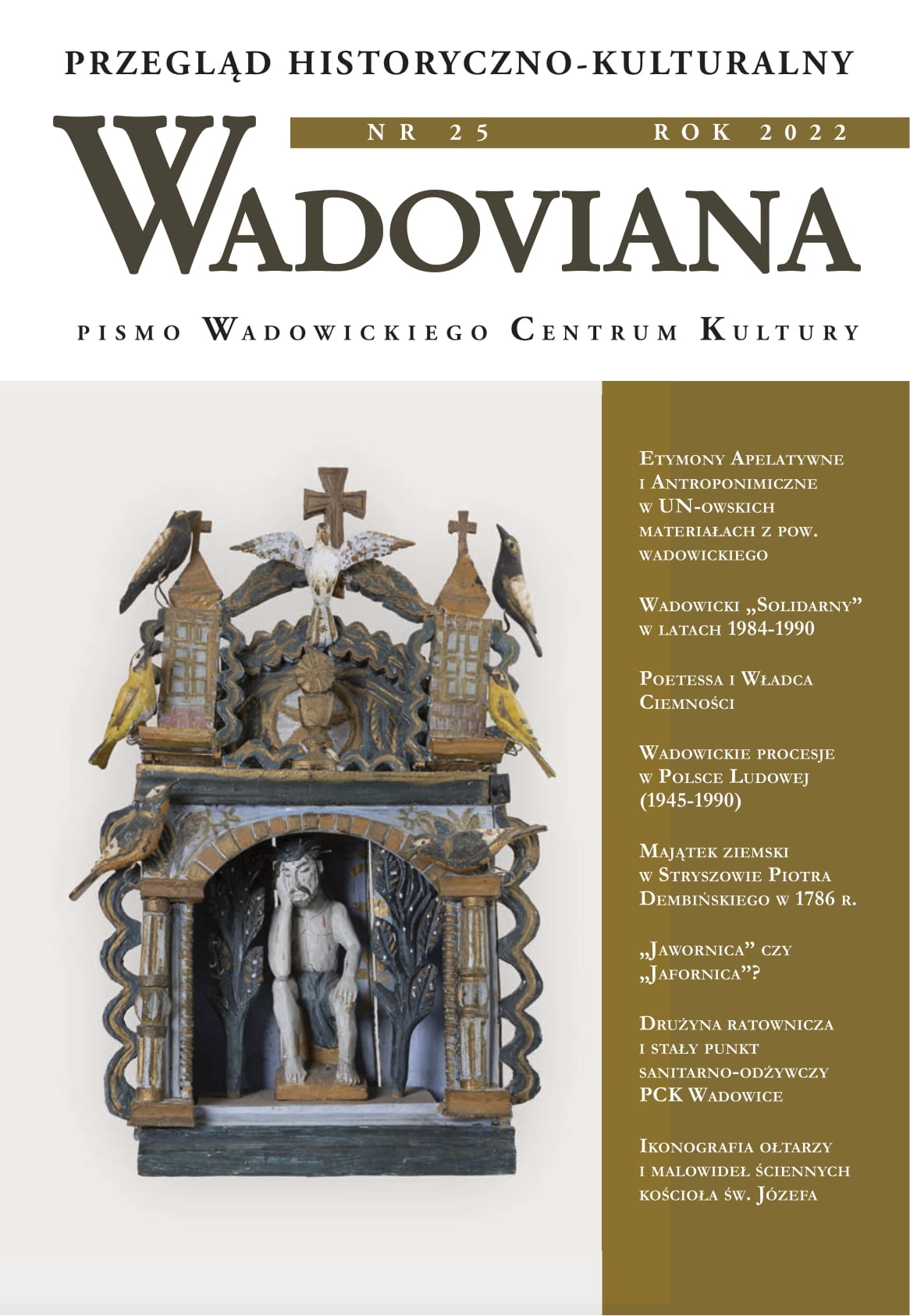
In Poland many toponyms, in particular oronyms (names of mountains) is of volochian origin. One of the most frequent ethymologic roots in Poland is the name of sycamore three (Acer pseudoplatanus L.), namely derivatives of Polish “jawor”. Following prof. Janusz Rieger and his studies on Polish valachisms we try to question the common view that the oronym “Jawornica” near Andrychów comes from the name of the sycamore, instead trying to support the opinion that it may come from “Jafornycia” which is a derivate of Valachian “Jafar”/”Jafer” meaning the green, leafy stems of a popular forest shrublet of eatable berries (the blueberry). We support this view i.a. by comparing it to the ethymology of another oronym – “Leskowiec”, of a better documented history.
More...

Motives: Urban developers around the world have been using smart management systems in redeveloping cities. This strategy allows a sustainable long term approach, built on scientific findings. Accurate data and information are key in achieving smart management in the reconstruction of post-war areas. Having the right information at the right time helps government officials, service providers and residents themselves make better choices when it comes to the reconstruction of post-conflict areas. Aims: This paper explores the role of resident experts’ contribution and how they can aid officials make more educated choices when it comes to urban decision making. It also addresses the ambiguity of the impact of using the expertise of local urban planners and architects in urban decision making in the reconstruction process as one of the strategies to achieve a smart city. The Old City of Mosul was selected by the authors as a case study in the post-war regeneration process. Therefore, the paper attempts to reach a scientific decision in selecting the best approach towards the urban regeneration of the Old City of Mosul. Results: The paper signifies the role of the local community experts in urban decision making as a bottom to top approach, and recommendations were made based on the research findings.
More...
Motives: The research deals with the issue of urban sprawl on agricultural lands. It is an urban problem caused by rapid urbanization and poor planning. It is considered one problem that threatens cities with environmental and health disasters. It also threatens agricultural life and the green belt surrounding cities. Changes in urban sprawl on agricultural land are associated with complex processes that lead to multiple social, economic, political, and environmental risks and thus pose a threat and an obstacle to the sustainability of cities.Aim: The research aims to study and evaluate the reality of the city of Baghdad and the extent of its ability and flexibility to withstand the disaster of urban sprawl on agricultural lands. The research also the aim of this research to identify the gaps and the reasons that led to this disaster and reach solutions that may reduce this phenomenon that burdens the economy and the Iraqi people who suffer from difficult economic conditions. In addition to raising awareness about the effects of urban sprawl on agricultural lands and the environment, clarifying the role of participation and the limits of responsibility that can be entrusted to government and academic agencies at all levels, individually or collectively, to participate and find solutions to the risk of extensive urban sprawl.Results: In assessing the reality of the study area, the research relied on the city resilience scorecard, which the United Nations Office for Disaster Risk Reduction (UNDRR) and with the support of United States Agency for International Development (USAID) and the European Commission. Field surveys and the opinions of specialists were relied upon to study the reality of the city of Baghdad to determine the extent to which it was affected by the disaster of encroachment on agricultural lands. There are gaps between planning and contemporary challenges among the most important research findings. Planning is increasingly decoupled from the contemporary urban challenges associated with rapid urbanization. The results of the practical study showed that the division of land uses in the city of Baghdad is not deep and incomplete. Also, it is not regularly reviewed according to the map of the expected risks, including the state of urban sprawl on agricultural lands in the city. Consequently, the city’s inability to withstand the disaster resulting from urban sprawl and the problems that result from it in the environmental, health, or social aspects. Based on the results, the research reached a set of recommendations, including the need for continuous updating to detect urban sprawl on agricultural lands. This is done using the latest remote sensing data and taking quick precautions against these expansions, in addition to the importance of updating building controls and standards regularly (or periodically) to take the changing data and evidence about risks to enhance the city of Baghdad’s ability to withstand the disaster of the decline of agricultural lands.
More...
Motives: For many years now, suburbanisation processes have been perceived as one of the most significant factors affecting changes in landscape structures. Numerous attempts are made to find appropriate methods and materials for a comparative analysis of land use changes in different periods of time and other indicators measuring the scale of this phenomenon. These studies result from the need to balance the suburbanisation process around the main service area of the Tri-City, the rapid pace of which causes development to enter areas that are not suitable for development due to environmental reasons. This implies the need for constant monitoring of this process.Aim: The study is an analysis of changes in land use patterns that took place in some rural areas surrounding the Tri-City agglomeration in the period of 2012–2018, and an attempt to assess how suburbanisation processes may be perceived in the light of the 1985 concept of the Gdańsk agglomeration development. The analysis covers selected rural areas located in the closest vicinity to the central housing zones of the Tri-City agglomeration and areas of rural characteristics located within the administrative borders of the cities.Results: Applying a synthetic indicator allowing to analyse convergence of structures made it possible to determine areas where the far-reaching changes are observed. The analysis covers some negative consequences of suburbanisation in relation to the natural environment, e.g. the unbalanced proportion between bioactive and built-up areas. In order to grasp current trends, the analysis refers to the data on the agglomeration development in the 1980’s. The methods of the research can be used in the analysis of other areas – regardless of administrative borders, for research where statistical data generalized at the commune level are insufficient.
More...
Motives: The paper focuses on economic aspects of revitalisation of distressed areas and discusses results of the first and so far the only one survey on the subject conducted among the local governments in Polish municipalities. The article continues our previous research on sustainable revitalisation and focuses attention on one dimension of revitalisation – the local economy. We propose an innovative framework for economic revitalisation, which has been positively verified on the basis of the analysis of research results. The article also explores the views of local authorities on entrepreneurial participation in revitalisation.Aim: The main objective is to develop a research method for analysing economic revitalisation and to identify local authorities’ perception of priority policy interventions for economic revitalisation in Polish municipalities. We also aim to verify the scale of entrepreneurs’ involvement in planning and monitoring revitalisation.Results: Respondents show higher appreciation for economic revitalisation approach based on renovation and modernisation of buildings and technical infrastructure. The integrated approach to economic revitalisation was indicated by the fewest respondents. The low level or total lack of mobilisation of the business community around revitalisation in economic dimension can be considered as significant threats to the achievement of its objectives.
More...
Cities are often divided by invisible borders, and this demarcation is man-made, with some areas featuring large infrastructure, well-maintained parks, gardens, and upscale residential areas. In contrast, other areas are characterized by severe deprivation, inadequate housing, inadequate services, poor recreation and cultural facilities, deterioration, and scarce infrastructure investment. These tangible differences come as symptoms of intangible and persistent divisions in society that distribute unequal opportunities and freedoms among the population. The research problem has shown the lack of clarity and diagnosis of urban problems that led to the emergence of the urban gap in cities). This paper focuses on breaking down the difficult edges created by the urban zoning of the city that would enhance interactions between communities and social classes through a practical study on a selected sample (Al-Hussein neighbourhood and Al-Intisar neighbourhood, Al-Muthanna, Iraq). The research concluded the importance of finding appropriate architectural and urban solutions and strategies to cross the urban inequality gap and achieve justice.
More...